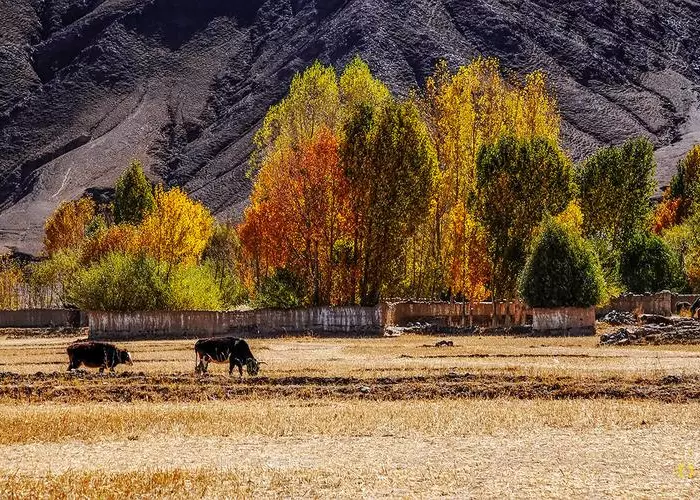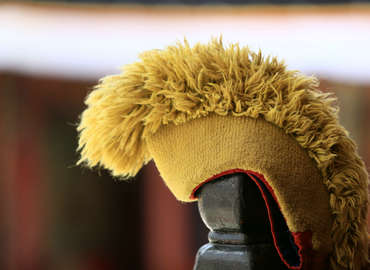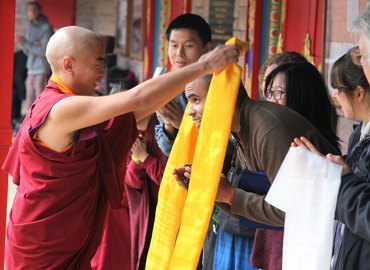Tibetan Buddhist Colors
- Catherine
- Last Updated : 07/23/2025
Due to the impact of the geographical environment, cultural inheritance and religious belief on the Tibetan Plateau, Tibetan people have already formed their own unique color concept, and they have given different meanings, weights and levels to different colors. Their color concept is embodied in the Buddhist culture, as well as Thangkas, murals, architecture, sculpture, folk arts, and folklife. Here are seven of the most iconic colors:
Content Preview
Red - a Symbol of Power
In Buddhism, Amitabha, the leader of the Western Pure Land (Sukhavati) is red, so red is a symbol of power. In Tibetan opera, the character wearing a dark red mask represents a king.
The usage of red in Tibetan architecture is strictly regulated. It is mainly used in the outer walls of palaces, dharma halls, and halls for propitiating stupa towers, to show majesty. Thus, it's one of the typical Tibetan colors. For example, the red palace of the Potala Palace has the shrine hall of the Dalai Lama's stupa towers, which is the center of the whole Potala Palace complex, with the important significance of commemoration and sacrifice. Most of the Dharma halls are painted in red, such as Nechung Kuten Hall of Drepung Monastery and Protector Deity Hall of Samye Monastery. In the primitive Bon religion of Tibet, the universe was divided into three worlds: god, man, and ghost. In order to avoid the invasion of ghosts, people painted their faces with red dye. With the development of the times and with the change of belief, this kind of red is no longer painted on the face but remains in the building.
Red is also widely used in monks' Kasaya robes. It's said that 2,500 years ago, in India - the birthplace of Buddhism, people treated red as the cheapest and least noticeable color. So monks use red as their dressing color to show their desire to pursue spiritual perfection, instead of appearance. Also, it's good for them to get free from outside interference and to concentrate on Buddhism.
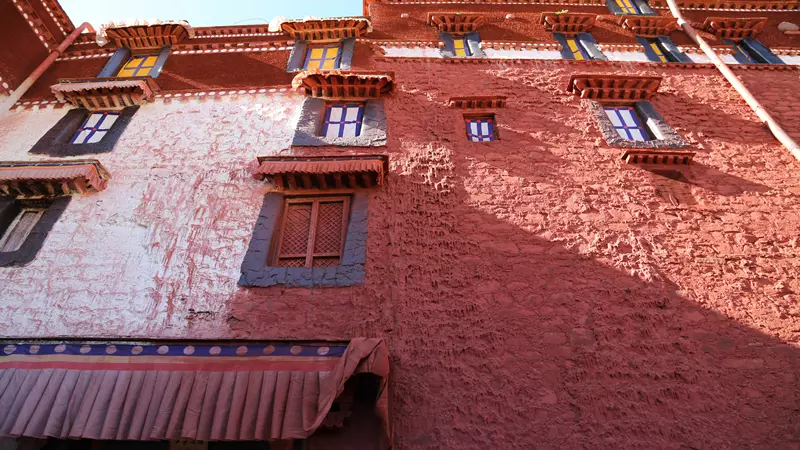
Yellow - Symbolizes Prosperity and Land
In Buddhism, Ratnasambhava, representing the south position, is yellow, so yellow represents the south. In Tibetan opera, the character with yellow masks represents a noble monk.
Yellow symbolizes prosperity, as well as the land. In Tibetan architecture, the buildings painted in yellow have a higher status, such as temples, the residences of living Buddhas or eminent monks, well-known practice rooms, and the most important halls of the monasteries. For example, the Dalai Lama's yellow practice room in the west of the Potala Palace, the Jambak Buddha Hall of Drepung Monastery, and the main hall of Mindrolling Monastery. As for the yellow house on Barkhor Street - Makye Ame, it's in yellow cos it's people's emotional sustenance for memorizing Tsangyang Gyatso - the sixth Dalai Lama. In addition, Buddha's clothes, various religious articles, robes for senior monks and living buddhas, are all yellow. By the way, ordinary monks and laypeople generally do not wear yellow color clothes.
The reason why yellow has a noble status in Buddhism is that it has a direct link with Sakyamuni Buddha. Sakyamuni gave up his throne and began a simple life of practice under the tree with one meal per day. He upheld the concept of simplicity and no longer accepted good food or clothing. So he went to the sky burial spot to pick up the discarded shroud, which had been yellowed by the sun and the rain, and washed it and wrapped it around his body. Then the customs of yellow robes had been followed. Over time, yellow was widely used in religious places.
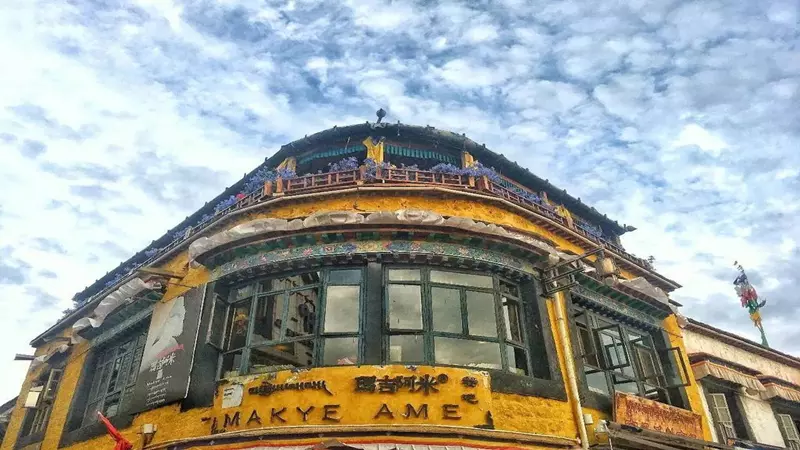
White - Important Part of Tibetan Culture
In Buddhism, the white Vajrasattva represents the position of the East, so the East is expressed in white. In Tibetan culture, white refers to compassion.
The custom of advocating white color is an extremely important part of Tibetan culture. The most typical example is the presentation of Khata. It is easy to find that the white Khata is a symbol of Tibetan etiquette on all occasions, no matter whether the most sacred or the most common one. In Tibetan opera, the white mask refers to the male character. The old man will deliberately wear a white coat with a sun and moon pattern on his own zodiac year to show good fortune. The exterior walls of the houses in Tibet are also white. Tibetans live on the snowy plateau, drink white milk, present white Khata, and daub their houses' walls in white. Scientifically, white can resist the radiation of ultraviolet on highland lands.
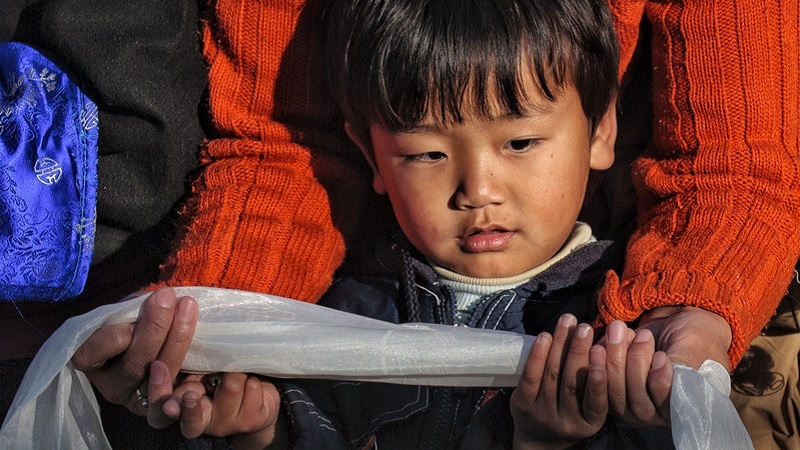
Blue - Shows the Majesty and Auspicious
Because the blue Motionless Buddha in Buddhism represents the middle position, blue means the middle. In Tibetan opera, the blue mask refers specifically to the hunter.
The most familiar blue color is the so-called Tibetan blue. Tibetan blue is mainly used for various angry gods and protector gods in Buddhist Thangkas and murals that mainly represent religious subjects. The color can show the power, majesty, and temperament of the angry gods and protector gods to the maximum extent, with a three-dimensional sense. It's an artistic effect that cannot be represented by any other blue color. The patterns on Tibetan door curtains or tents are almost pasted or sewn with Tibetan blue cloth to represent auspiciousness and abundance, which is another meaning and symbol of Tibetan blue in Tibetan folk customs. In addition, ancient Bonists regarded the color of the sky as sacred, and the sides of the vests and skirts in the monk costumes were lined with blue brims. The inner edge of the Tibetan costume inlaid with blue lines is just adopted from this ancient tradition.
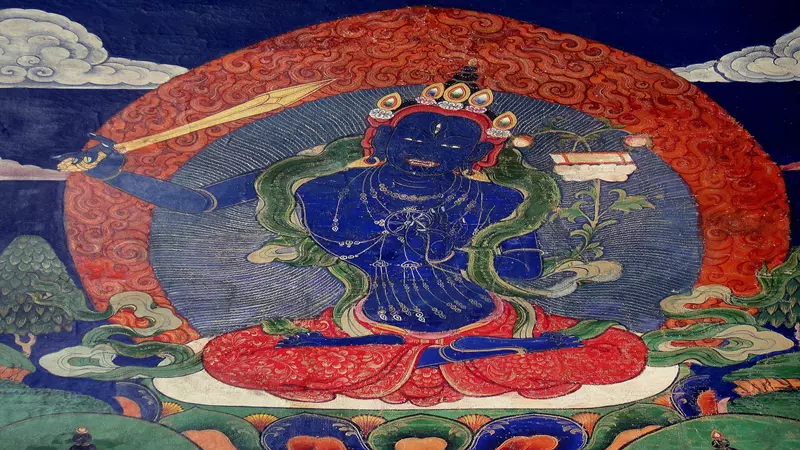
Green - Means Civilians
In Buddhism, Amoghasiddhi Buddha represents the north, so green represents the north. The green mask in Tibetan opera refers specifically to female characters. Green in Tibet means civilians, which is closer to the public, life and the vast agricultural and pastoral areas. Green headscarves, turquoise decorations, green shirts, and green robe brims are often seen on Tibetan women.
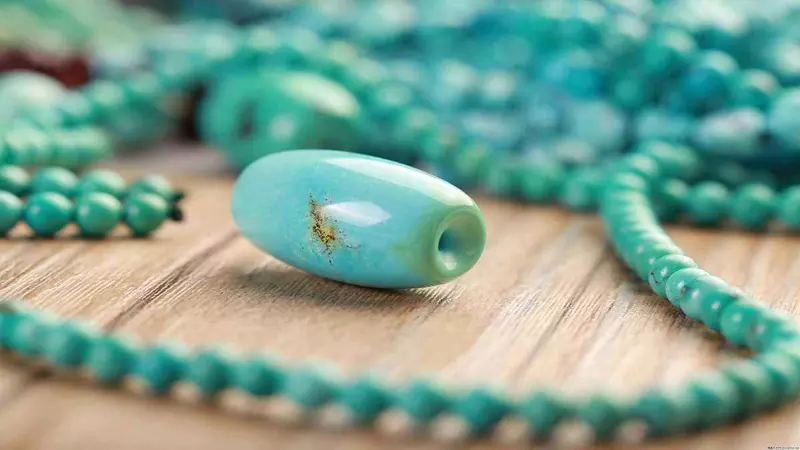
Gold - Shows Magnificent Momentum
The golden roof is an important feature of Tibetan palaces, monasteries and pagodas. The surface on the top is a copper-plated barrel-long tile, which is a unique spectacle of Tibetan architecture. The purpose of such a feature is to make the main building stand out from the group of buildings and show more magnificent momentum. There are many kinds of Tibetan Buddhist sculptures, and the golden ones are colorful and shining. Golden color also appears on Buddha statues, Thangkas and murals. The pure gold is processed into gold powder that can be brushed, the gold foil as thin as cicada's wings or gilt craft.
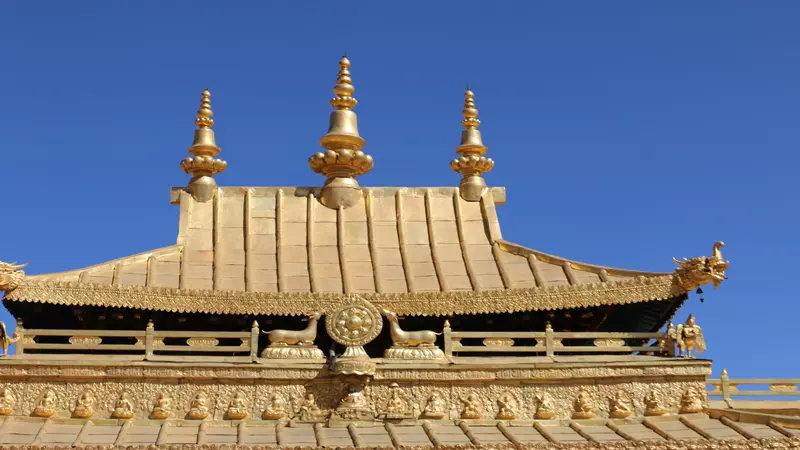
Black - Repels Evil Spirits
Black is a very complex color in Tibetan people's lives. In Tibetan culture, black represents authority and dignity. Some say black absorbs light, but others say it repels evil spirits. The herdsmen live in black tents woven with black yak hair. Men and women in rural areas wear black Tibetan clothing, especially traditional rural women, they are completely in black. In Tibetan architecture, black window frames must be paired on the white wall, narrow on the top while wide on the bottom, which means "ox horn". It is said this kind of design can bring good luck.
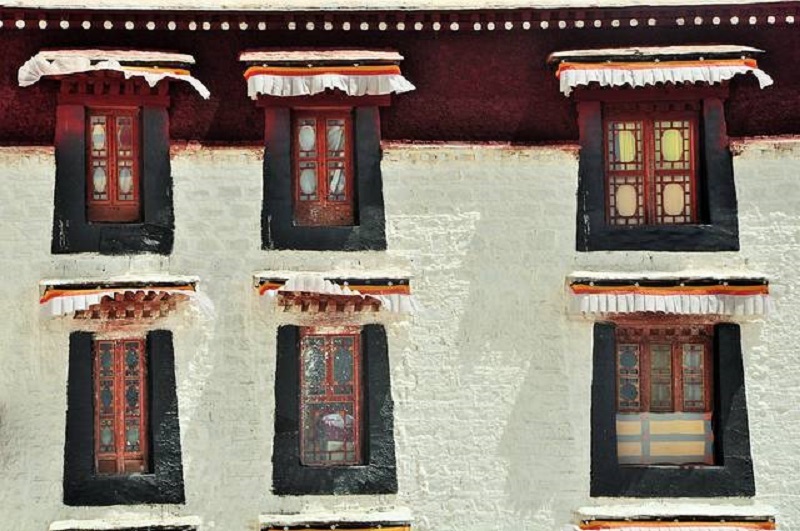
Conclusion
In Tibetan culture, colors are more than decoration—they reflect deep spiritual beliefs, cultural identity, and everyday life. Each color holds symbolic meaning shaped by religion, tradition, and the plateau environment. From monks’ robes to murals and clothing, these hues express the Tibetan people's strong connection to their faith and heritage. Understanding these colors offers a meaningful glimpse into the richness of Tibetan life.
Email response within 0.5~24 hours.



